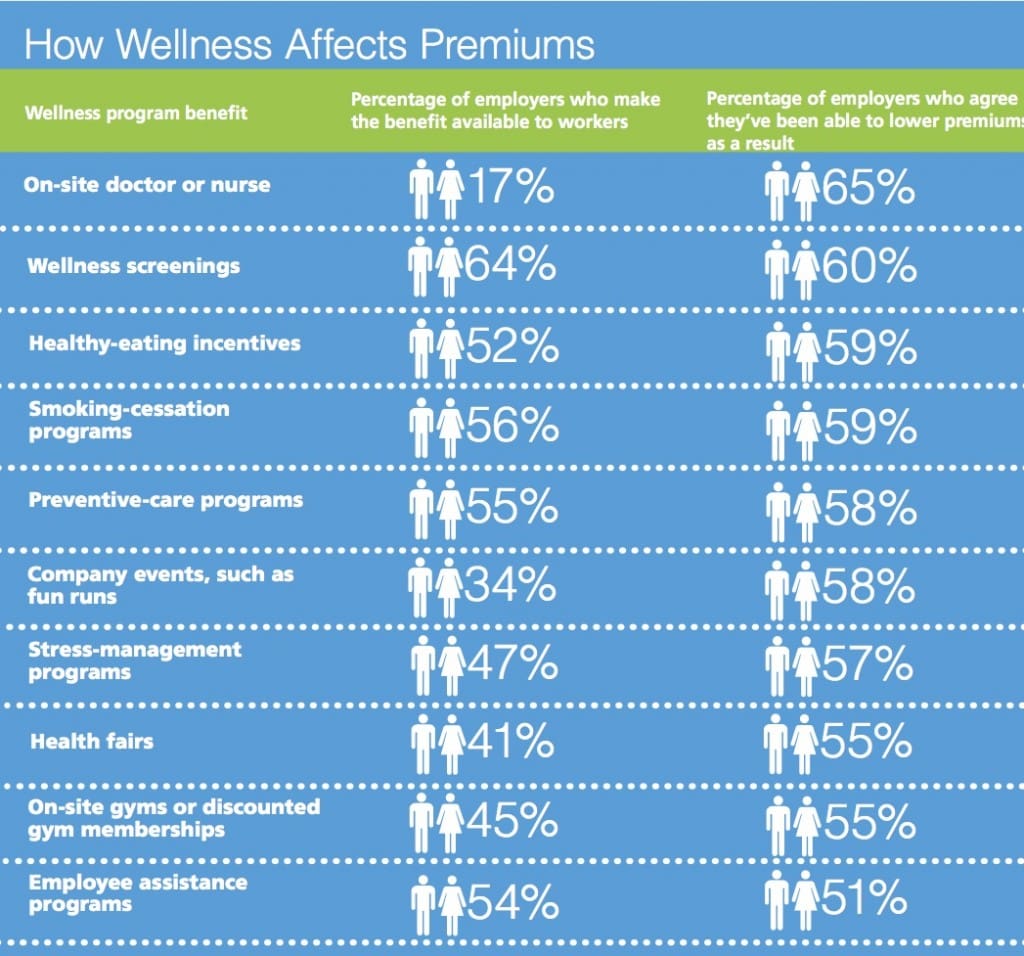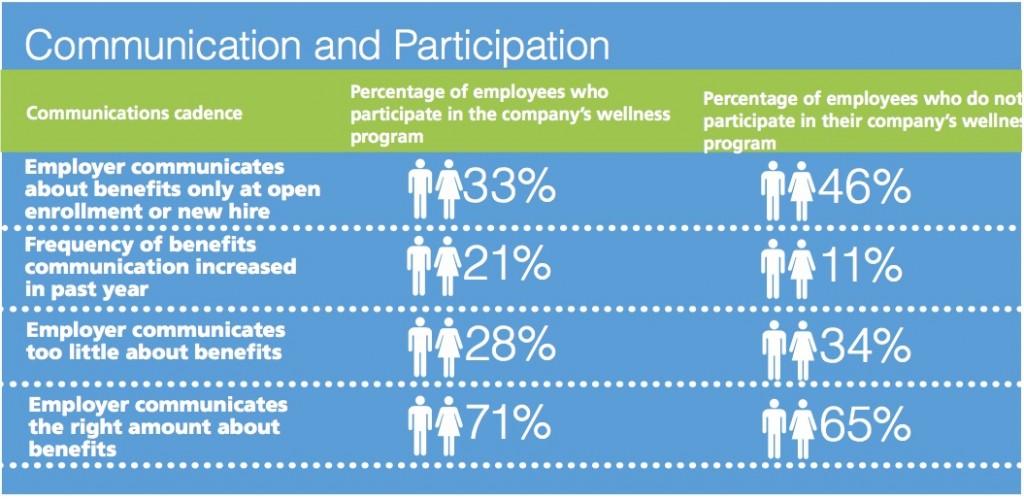A new report finds that wellness programs continue to benefit organizations and employees alike.
By Matthew Owenby
The doctor is in, but not where you might expect. An increasing number of physicians are getting out of their offices -not to make house calls, but to make cubicle visits. That’s because on-site doctors and clinics are a growing trend in workplace wellness finds the 2015 Aflac WorkForces Report -and with good reason. The Center for Studying Health System Change (HSC) reports providing employees with access to medical care at the workplace increases productivity, enhances a company’s reputation as being a desirable place to work, and reduces healthcare costs.
Employees and employers alike are keen on in-house medical services because they save both money and time. According to a Reuters report: “Workers can walk to nearby clinics, rather than spending work hours commuting to doctors’ offices. The convenience prompts many to get symptoms checked quickly. Urgent and contagious conditions are then caught earlier.”
The 2015 Aflac WorkForces Report finds that organizations see the value in in-house physicians since they are cost-effective. Seventeen percent of companies participating report their wellness efforts include an on-site doctor or nurse. Of those, 65 percent agree their wellness programs enable them to offer lower health insurance premiums to their workers.
Why are lowered premiums so important? Because reducing costs to workers helps provide much-needed financial relief: Employee contributions to healthcare coverage rose 81 percent between 2004 and 2014, and the increases show no sign of abating, finds Kaiser’s 2014 Employer Health Benefits Survey. And while employee healthcare costs are rising, salaries aren’t keeping pace. That means some workers are actually taking home less than they were 10 years ago.
Wellness Trends
On the Rise
In addition to uncovering links between various wellness program offerings and healthcare premiums, the 2015 Aflac WorkForces Report reveals the growing popularity of wellness initiatives. Put simply, more employers are offering wellness programs than ever before. Nearly half of respondents report offering company-sponsored wellness programs, which is up from 30 percent in 2012. Not only are more businesses getting on the wellness program bandwagon, but the study finds that organizations may also becoming more skilled when executing wellness initiatives. Fifty-three percent of respondents believe their programs are effective, an increase of seven percentage points over 2014. What’s more, nearly 39 percent agree they have helped clients lower health insurance premiums as a result of their wellness programs. That’s an increase of five percentage points over last year’s survey.
Retention Improver
As the economy begins to improve and the job market opens up, many workers are expected to look for new opportunities. Companies interested in retaining and attracting top workers may find that wellness programs are a key advantage. That’s because employee satisfaction with benefits translates into workplace longevity: Employees at organizations with wellness programs report they are less likely to look for new jobs in the next 12 months than those whose employers don’t (46 versus 52 percent).
The bottom line: Benefits drive worker contentment and wellness programs are an important part of the equation. According to Aflac’s study, three out of four employers agree their wellness programs improve worker satisfaction. Workers who report participating in company-sponsored wellness programs say they’re more satisfied in their jobs and with their benefits packages than those who don’t take part.
Increasing Engagement
The 2015 Aflac WorkForces Report also shows that wellness programs may boost employee engagement when paired with other worksite perks and strong communications strategies. The study shows that wellness program participation is higher among employers offering a combination of financial guidance and education, voluntary benefits, and flexible scheduling. It’s also higher among companies that increase the frequency of their benefits communications over the past year.
Employers eager to increase their employees’ satisfaction, productivity, and longevity are increasingly turning to wellness programs to aid their efforts. However, the challenge lies in the execution. To increase participation -and reduce healthcare costs for their companies and workers -employers must communicate about benefits in a smart, cohesive manner. Organizations need to examine their wellness programs to ensure they include the benefits employees find most desirable, from wellness screenings and healthy-eating programs to preventive care and in-house clinics and physicians.
Matthew Owenby is Aflac’s senior vice president and chief human resources officer. The 2015 Aflac WorkForces Report is the fifth annual survey of employer, worker, and broker attitudes and opinions about healthcare issues.


















